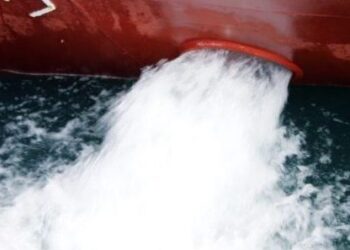The U.S. Environmental Protection Agency recently reached an agreement with the U.S. Navy and Guam Industrial Services (known as Guam Shipyard) for hazardous waste storage violations under the federal Resource Conservation and Recovery Act, at Apra Harbor, Guam. As part of the settlement, Guam Shipyard will remove an abandoned vessel grounded in the harbor.
EPA’s inspections at the Guam Shipyard facility in 2012, 2013 and 2014 documented illegal storage and improperly contained hazardous wastes. Guam Shipyard, which operated the facility where the violations occurred, will pay a penalty of $44,893 and the Navy will pay $80,680 to settle its violations.
In addition, Guam Shipyard has agreed to spend an estimated $250,000 to $330,000 to remove the abandoned vessel theGuahan-I located on the shoreline of the Outer Piti Channel in Apra Harbor. The Guahan-I is a 115-foot by 322-foot steel landing craft that likely went aground during Typhoon Pongsona in 2002. Guam Shipyard operates a ship repair facility at Apra Harbor and will use its own personnel and equipment, including its own floating crane, to cut, lift, and dispose of the vessel as scrap.
“All Guam facilities must properly store and dispose of hazardous waste to protect the island’s residents and environment,” said Alexis Strauss, EPA’s Acting Regional Administrator for the Pacific Southwest. “Guam Shipyard’s project to remove the sunken ship will greatly benefit the marine ecosystem.”
Guam Shipyard is a contractor to the U.S. Navy, operating on leased federal land. The U.S. Navy also generated a portion of the hazardous waste stored at the Guam Shipyard facility. The wastes included discarded flammable liquids, waste battery acid, lead paint, zinc powder, fluorescent light bulbs, and oily rags. All of the hazardous waste has since been properly disposed.
The federal hazardous waste rules prevent known, harmful materials from being released to the environment and posing a risk to workers. To comply, facilities must properly store, label and seal hazardous waste containers and must properly train their staff. Proper disposal of hazardous waste must be at a permitted disposal site, with the proper notifications and reports made to the EPA.
Source: EPA































































